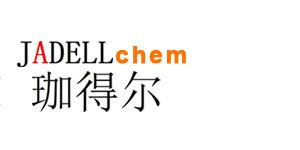Recombinant Human Hemofiltrate CC Chemokine-1/CCL14 对人的单核细胞有较弱的活性,通过受体发挥作用,也能识别MIP-1 alpha。
Synonyms
rHuHCC-1/CCL14; C-C motif chemokine 14; SCYA14 ; 重组人 CC 趋化因子14
Species
HumanSource
E. coli Accession
Q16627 Gene ID
6358 Molecular Weight
Approximately 8.4 kDa AA Sequence
TESSSRGPYH PSECCFTYTT YKIPRQRIMD YYETNSQCSK PGIVFITKRG HSVCTNPSDK WVQDYIKDMK EN Biological Activity
The ED50 is <25 μg/mL as measured by CHO cells transfected with human CCR5, corresponding to a specific activity of >40 units/mg. Appearance
Lyophilized powder. Formulation
Lyophilized after extensive dialysis against PBS. Endotoxin Level
<0.2 EU/μg, determined by LAL method. Reconstitution
Reconstitute the lyophilized recombinant Human Hemofiltrate CC Chemokine-1/CCL14 (rHuHCC-1/CCL14) to 100 µg/mL using ddH2O. Storage & Stability
Lyophilized recombinant Human Hemofiltrate CC Chemokine-1/CCL14 (rHuHCC-1/CCL14) is stored at -20°C. After reconstitution, it is stable at 4°C for 2 weeks or -20°C for longer. It is recommended to freeze aliquots at -20°C or -80°C for extended storage. Shipping
Room temperature in continental US; may vary elsewhere. Background
Human Hemofiltrate CC Chemokine-1/CCL14 (HCC-1) is expressed constitutively in several normal tissues (spleen, liver, skeletal and heart muscle, gut, and bone marrow), and is present at high concentrations (1-80 nM) in plasma. HCC-1 has weak activities on human monocytes and acts via receptors that also recognize MIP-lot. It induces intracellular Ca2+ changes and enzyme release, but no chemotaxis, at concentrations of 100-1,000 nM, and is inactive on T lymphocytes, neutrophils, and eosinophil leukocytes. In addition, HCC-1 enhances the proliferation of CD34+ myeloid progenitor cells. It is as effective as MIP-1α, but about 100-fold less potent[1]. CCL14 regulate extracellular matrix and adhesion molecules in the trophoblast[2]. |



